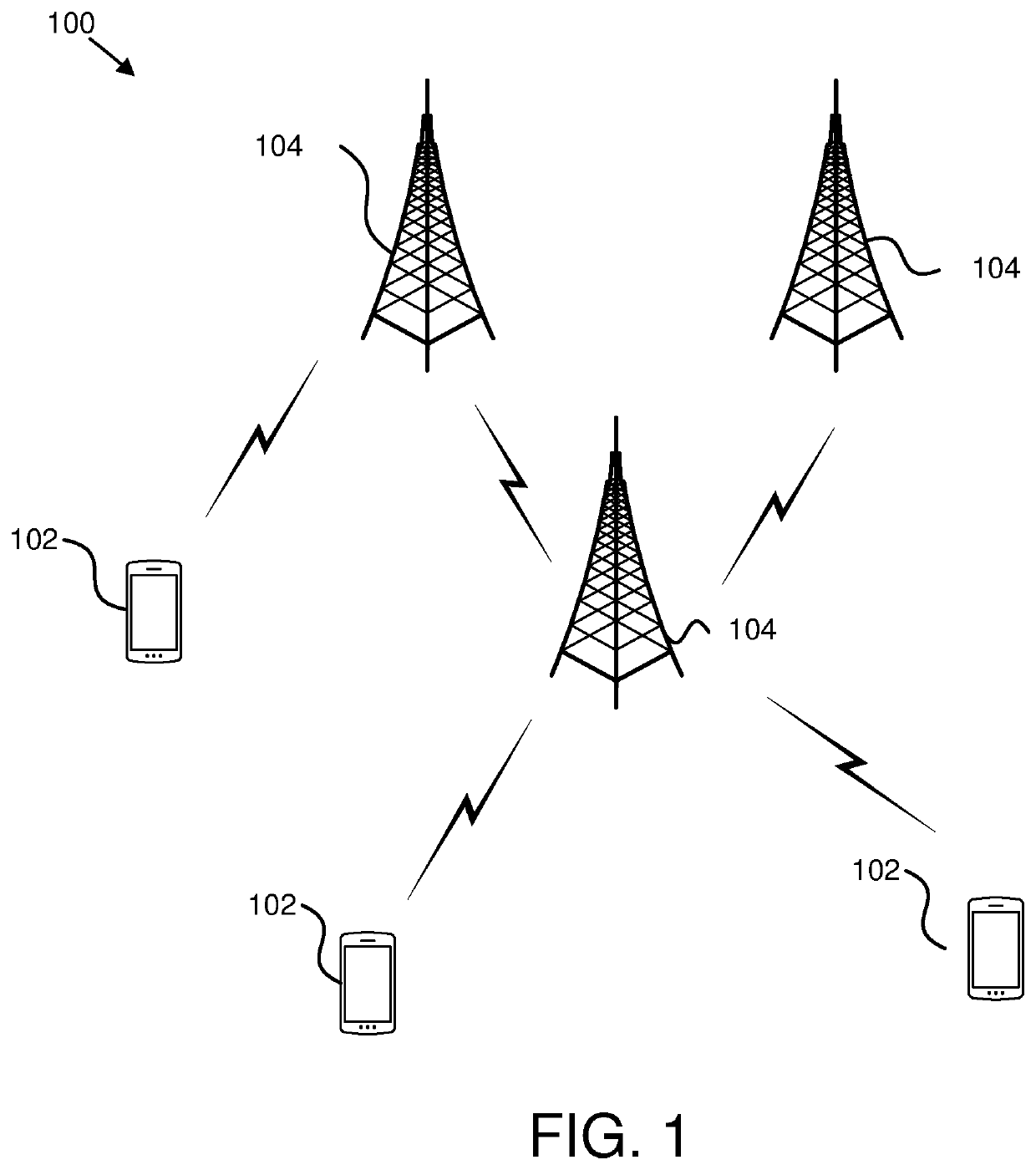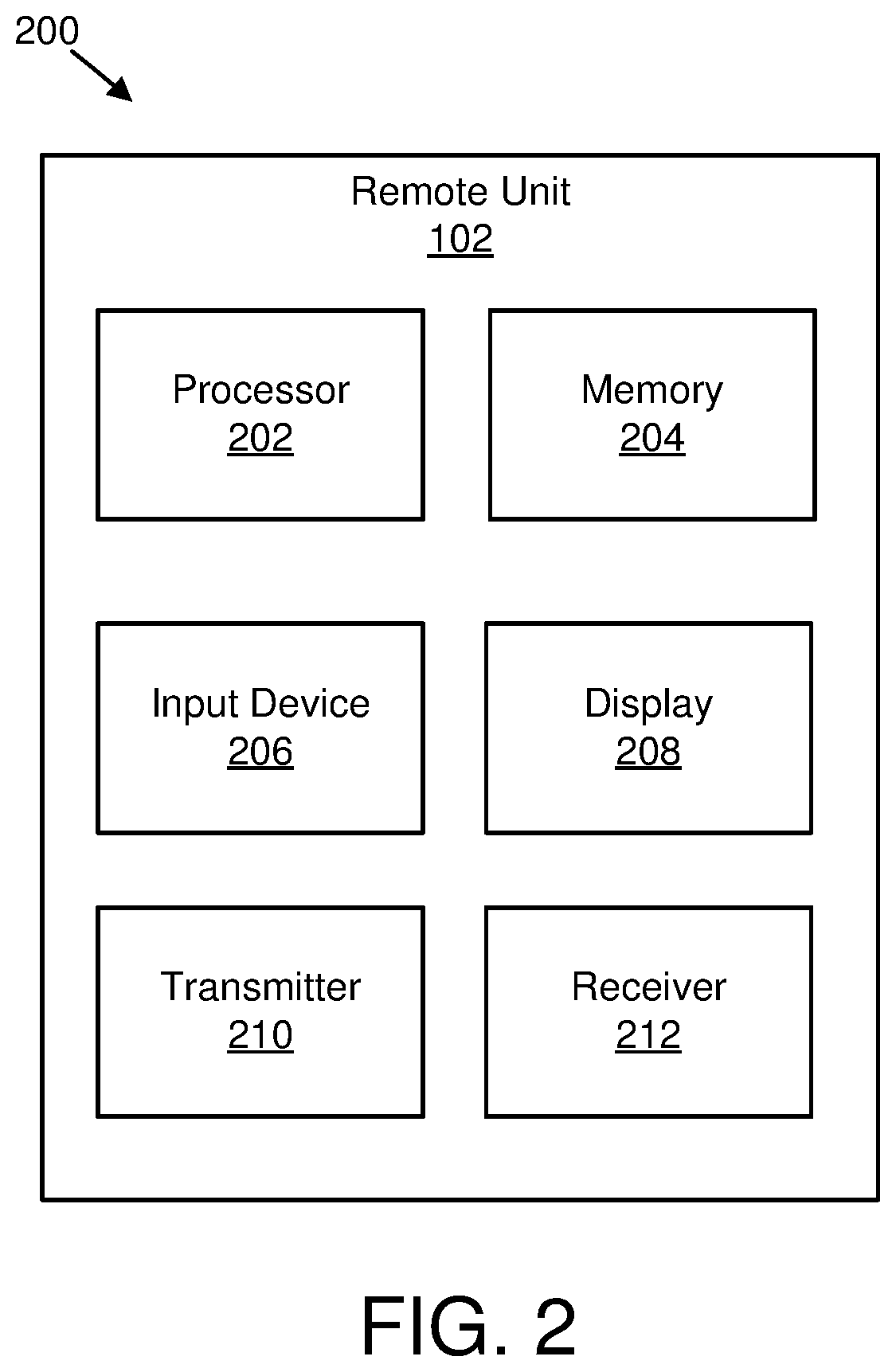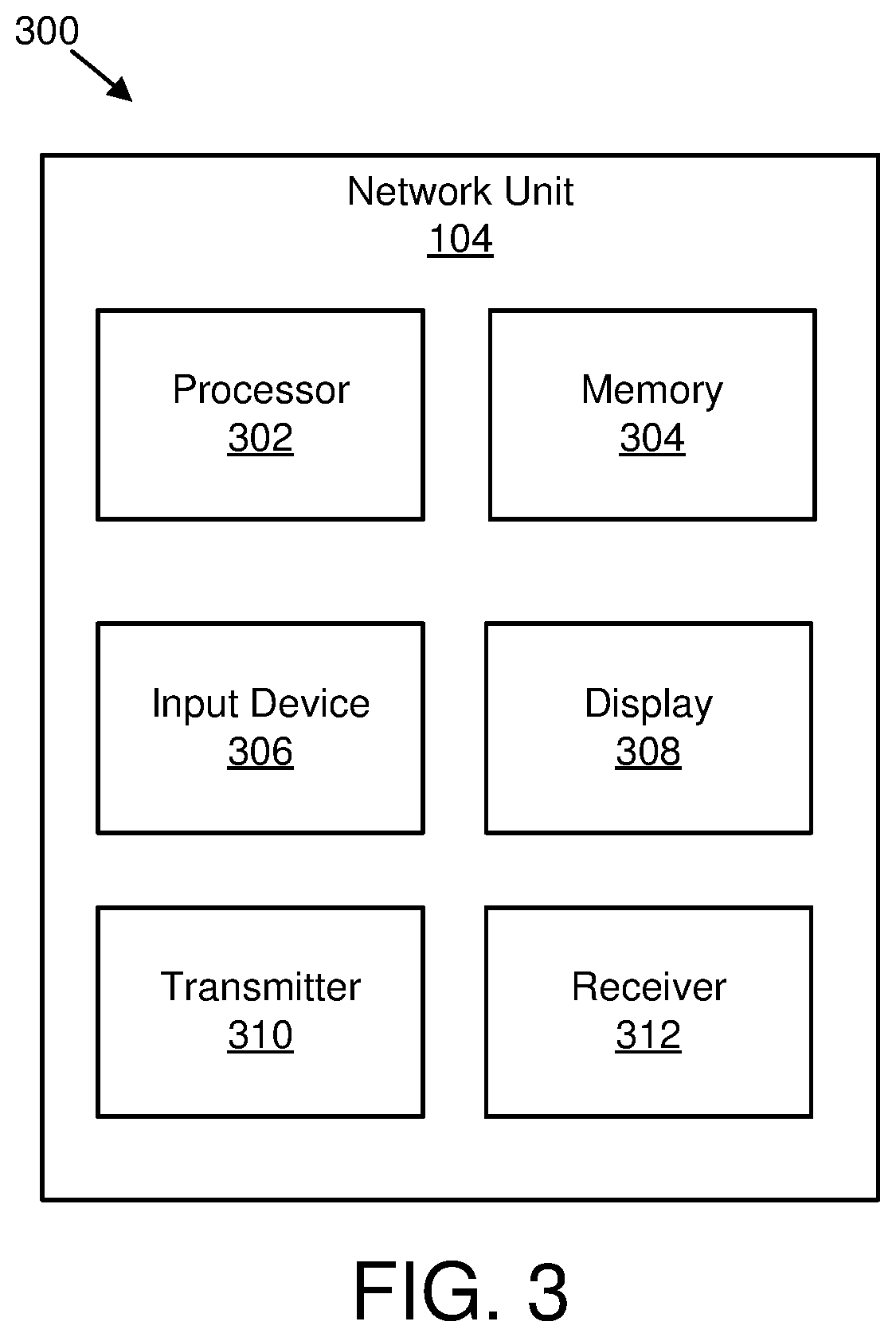Autonomous bandwidth part switching
a bandwidth part and automatic technology, applied in the field of wireless communication, can solve the problem of not being able to continue to use an active bandwidth par
- Summary
- Abstract
- Description
- Claims
- Application Information
AI Technical Summary
Benefits of technology
Problems solved by technology
Method used
Image
Examples
first embodiment
[0050]In another implementation of the first embodiment, the UE may autonomously deactivate a current uplink BWP of an NR-U cell for a certain time period if the cell is experiencing a high LBT failure rate, a high CCA failure rate, and / or a high channel occupancy. In such an implementation, the UE may switch to the initial BWP or switch to another BWP (e.g., configured UL BWP).
[0051]In certain implementations of the first embodiment, the UE may deactivate the unlicensed cell that is experiencing a high LBT failure rate, a high CCA failure rate, and / or a high channel occupancy (e.g., uplink and downlink of the cell—if configured). In such an implementation, the UE is still able to communicate with the network node (e.g., gNB) over some other aggregated serving cell (e.g., the UE is configured for carrier aggregation or dual connectivity mode). If the UE has only one serving cell that has high congestion (e.g., a high LBT failure rate, a high CCA failure rate, and / or a high channel o...
second embodiment
[0057]In a second embodiment, a UE may take into account an LBT failure rate, a CCA failure rate, or a channel occupancy of an unlicensed cell if deciding on the routing of PDCP PDUs in a transmitting PDCP entity to associated RLC entities for split bearer operation. In certain embodiments, routing is performed by PDCP for split bearers by considering a configured threshold, (e.g., ul-DataSplitThreshold). If the total amount of PDCP data volume and RLC data volume pending for initial transmission in the two associated RLC entities is equal to or larger than ul-DataSplitThreshold, a PDCP transmitting entity submits the PDCP PDU to either the primary RLC entity or the secondary RLC entity, or else the PDCP PDUs are submitted to the primary RLC entity.
[0058]In various embodiments, such as in NR-U, an impact of LBT may be considered for routing data to the different paths (e.g., primary and / or secondary RLC entity) for split bearer operation. This may be beneficial if one of the paths o...
third embodiment
[0061]In a third embodiment, a gNB configures a UE to indicate whether the UE is allowed to autonomously deactivate and / or suspend an unlicensed serving cell (e.g., temporarily deactivate the uplink of an unlicensed cell) if the serving cell is experiencing high congestion.
[0062]In one implementation of the third embodiment, the UE starts a timer if the serving cell is experiencing high congestion and deactivates and / or suspends the serving cell (e.g., for the purpose of UL transmission and PDCP routing) as long as the timer is running. In such an implementation, the timer may be started in a MAC layer and the serving cell may be deactivated and / or suspended if the measured and / or determined LBT failure rate and / or CCA failure rate exceeds a preconfigured threshold or if PHY indicates to the MAC layer a high LBT failure event, a high CCA failure event, a high channel occupancy, and / or another predefined case.
[0063]In certain implementations of the third embodiment, the UE autonomous...
PUM
 Login to View More
Login to View More Abstract
Description
Claims
Application Information
 Login to View More
Login to View More - R&D
- Intellectual Property
- Life Sciences
- Materials
- Tech Scout
- Unparalleled Data Quality
- Higher Quality Content
- 60% Fewer Hallucinations
Browse by: Latest US Patents, China's latest patents, Technical Efficacy Thesaurus, Application Domain, Technology Topic, Popular Technical Reports.
© 2025 PatSnap. All rights reserved.Legal|Privacy policy|Modern Slavery Act Transparency Statement|Sitemap|About US| Contact US: help@patsnap.com



